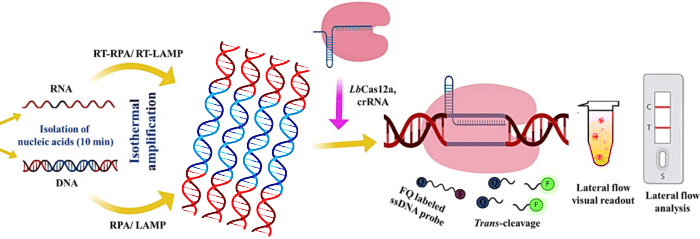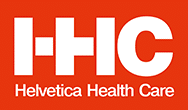Emerging Nucleic Acid Testing Technologies: A Comprehensive Overview
Nucleic acid testing (NAT) has become an indispensable tool in many fields, including healthcare and Forensic Medicine.
The ability to detect genetic material has allowed us to diagnose diseases, establish genetic relationships, and track pathogens. However, traditional NAT methods like polymerase chain reaction (PCR) can be time-consuming, labour-intensive, and limited in sensitivity.
The need for faster, precise, portable NAT has resulted in advancements in technologies that will transform this area. By utilising the latest advances, new NAT platforms promise to be faster, more accurate, highly automated, and widely accessible.
What is the nucleic acid test technique?
Nucleic acid tests are laboratory methods used to detect specific DNA or RNA sequences. These sequences indicate the presence of a particular organism or virus. These technologies can help stop antibiotic resistance by quickly identifying germs and their drug sensitivities. Some common nucleic acid test techniques include:
- PCR (polymerase chain reaction): Amplifies small segments of DNA to make many copies so it can be detected. Highly sensitive and used to test for viruses like HIV and influenza.
- RT-PCR (reverse transcription PCR): Converts RNA into DNA, then amplifies it using PCR. Used to detect RNA viruses like SARS-CoV-2 and hepatitis C.
- LAMP (loop-mediated isothermal amplification): Amplifies DNA efficiently and rapidly at a constant temperature. Gaining use in point-of-care testing.
- Southern blot: Detects DNA sequences through gel electrophoresis and probe hybridization. Used to identify disorders.
- Northern blot: Similar to Southern but for detecting RNA sequences.
- DNA microarrays: Uses probes on a chip for high-throughput sequence detection. Useful for gene expression.
- Next-generation sequencing: Rapidly sequences DNA/RNA to obtain sequence data. Enables whole genome sequencing.
By targeting specific microbial genetic sequences, nucleic acid tests can sensitively and precisely detect viruses, bacteria, and other pathogens. The choice of technique depends on the particular application and goals.
Types of Emerging Nucleic Acid Testing Technologies

Microfluidic-based technologies: These technologies miniaturise reactions onto small chips or cartridges. This allows for automated sample processing, reduced reagent/sample volumes, and shortened analysis times. Microfluidic cartridges, like the PCR device by Helvetica Health Care can detect pathogens from raw samples in just 30 minutes. Other examples include digital microfluidic chips, centrifugal microfluidics, and electrowetting-on-dielectric microfluidics.
Next-generation sequencing (NGS): It offers rapid, high-throughput sequencing of entire genomes or targeted regions of interest. NGS has enabled population-scale genomic analysis for personalised medicine. It also allows the comprehensive characterization of tumour DNA to guide cancer treatment. Future applications may include infectious disease diagnosis and routine newborn screening.
CRISPR-based technologies: This type of diagnostic allows highly specific and sensitive nucleic acid detection. Handling challenges effectively can lead us to a future of personalised medicine and better public health through data. This future can be achieved through the development of new NATs. Tools like SHERLOCK use CRISPR for rapid, accurate diagnostics. CRISPR could also be used to correct disease-causing mutations.
Nanopore sequencing: It analyses single DNA molecules in real time as they pass through nanoscale pores in a membrane. The MinION by Oxford Nanopore is a palm-sized sequencer that can generate long sequencing reads. Nanopore tech promises real-time infectious disease surveillance and rapid characterization of outbreak strains.
Digital PCR: It provides absolute quantification of nucleic acids by partitioning samples into thousands of nanoliter-sized droplets. This enhances precision and sensitivity even for minuscule amounts of starting material. Digital PCR is ideal for cancer mutation detection and minimal residual disease monitoring.
Advantages and Challenges of Emerging Technologies
These technologies provide unmatched speed, sensitivity, and scalability. They reduce the need for specialised labs and skilled technicians. Multiplexing allows high-throughput analysis of hundreds of samples and targets. Portability enables point-of-care testing. Falling costs increase accessibility.
However, high initial capital expenditure on equipment is a barrier to wider adoption. Complex sample prep and data analysis require cross-disciplinary expertise. Regulatory requirements pose hurdles to clinical translation. Off-target effects (like CRISPR) and ethical concerns around genetic data must be addressed. Ongoing research and commercialisation efforts will maximise benefits while mitigating risks.
Applications and Impacts of Emerging Technologies
Healthcare: By enabling early diagnosis of viruses and bacteria, precise disease monitoring (like tracking viral load in HIV), and even personalised gene therapy, emerging nucleic acid amplification tests can revolutionise precision medicine. These technologies can help stop antibiotic resistance by quickly identifying germs and their drug sensitivities.
Forensic Medicine: Highly accurate NGS and PCR technologies are enhancing forensic DNA analysis. Rapid DNA instruments allow law enforcement to generate profiles within hours. This is revolutionising crime scene investigation.
A Future of Precision and Progress
The field of nucleic acid testing is undergoing rapid innovation. Emerging NATs promise to transform human health through rapid, ultrasensitive genetic analysis. Further technological and computational advances are required to fully realise this potential and expand accessibility to underserved communities. If challenges are properly addressed, emerging NATs are poised to drive us into a data-driven future of personalised medicine and improved public health.
At Helvetica Health Care, we are at the forefront of this technology revolution, developing the latest testing products to meet current needs and help shape future applications. We offer a range of high-quality NATrol products for detecting SARS-CoV-2, Influenza A/B, HIV-1/2, and cancer mutations.
To automate and streamline NAT workflows, we offer the Flash Dx1000-e, a fully automated nucleic acid detection system designed for fast, reliable, and user-friendly results. This high-throughput system can process up to 96 samples in a single run and is compatible with a wide range of assays, including PCR, qPCR, and NGS. With its integrated extraction and amplification modules, the Flash Dx1000-e eliminates manual pipetting steps, reducing errors and saving time.
HHC’s portfolio of external run controls, panels and instruments offers the sensitivity, reproducibility, and ease of use needed for accurate clinical diagnostic tests and research. Our NATrol products deliver reliable, swift, and cost-effective results to meet your needs. Invest in quality solutions from HHC today to take infectious disease or genetic testing to the next level.
The use of independent external controls testing maintains quality control and safety and is highly recommended for ISO-approved laboratories.
Visit the Helvetica Health Care to know more about what we do.
